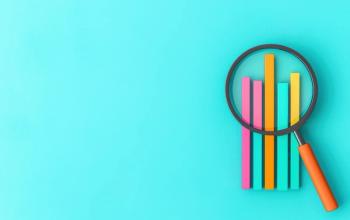
Novel software measures vessel tortuosity in ROP
The Novel Evidenced Assessment of Tortuosity (NEAT) system is intuitive and works even with poor images, according to its creators, Konstantinos Balaskas and his colleagues at Manchester Royal Eye Hospital and five other centres in the United Kingdom.
By Laird Harrison
New software may help assess vessel tortuosity associated with retinopathy of prematurity (ROP), according to researchers.
The Novel Evidenced Assessment of Tortuosity (NEAT) system is intuitive and works even with poor images, according to its creators, Konstantinos Balaskas and his colleagues at Manchester Royal Eye Hospital and five other centres in the United Kingdom.
However, they acknowledge that the system will need refinement before it can be used for diagnosis. The researchers published the finding in
A vasoproliferative disease in premature infants, retinopathy of prematurity can cause retinal detachment and blindness. If the condition progresses to plus disease, in which vessels dilate and arterioles become tortuous, treatment may be needed.
Currently experienced ophthalmologists screen for ROP. But other clinicians might be able to do the screening with the use of digital fundal cameras. Previous attempts to automate tortuosity measurements using these images were based largely on curvature calculations and produced variable results, according to Balaskas and his colleagues.
Poor image quality can limit the accuracy of such systems, and none of them provide convincing data on sensitivity and specificity of either plus disease detection or of single vessel tortuosity detection, they write.
The researchers designed the NEAT system to circumvent the problem of poor images with preprocessing steps and topological techniques, they write.
The user is first prompted to upload a retinal image, then to delineate borders of the optic dis. This allows setting of an area of 2.5 disc diameters within which the assessment will take place.
The programme removes background intensity variations. Then the user is prompted to segment the vessel. The user encompasses the vessel to be assessed with a linear border by highlighting each peak of vessel inflection. The product of the area enveloped and the number of inflexion points yields a calculation of tortuosity.
The user must follow a rigid set of instructions. But after becoming accustomed to the system, the user can produce a tortuosity score within about a minute, the researchers wrote.
To assess NEAT’s performance, 2 experimenters independently used it to assess 50 vessels from 50 eyes in neonatal fundus images where the entire vessel segment of interest was visible up to 2.5 disc diameters from the disc. A comparison of the results of the 2 experimenters to each other showed a correlation coefficient of 0.966, which the researchers termed “excellent reliability.”
Next the researchers compared tortuosity scores for individual vessels produced by NEAT to tortuosity scores for these vessels made by 2 experts in retinopathy of prematurity. This time the correlation coefficient was 0.706, ‘suggesting significant agreement. ‘
Next experts in the disease used images, examinations and patient history to grade 167 eyes as “no plus,” “mild plus” or “severe plus.” Masked to these assessments, 2 experimenters independently used NEAT to rate the severity of tortuosity in the posterior pole vessels of these patients on a scale of 1-15. The correlation coefficient for these two approaches for assessing the patients was 0.578, which the researchers called “modest.”
This suggests that features such as vessel width, crowding of discs and type of vessel with tortuosity should be combined in future versions of the NEAT system, the researchers concluded.
Separately experts also scored images based on only the posterior pole vessel images used in the NEAT assessments. The experts’ assessments compared with the NEAT experimenters’ assessments had a correlation coefficient of 0.802, which the researchers called “stronger.”
Clinicians do not agree on the definition of tortuosity for retinopathy of prematurity, write Balaskas and his colleagues. By incorporating the number of inflection points and the total surface area, they sought to make the NEAT system more consistent than other definitions.
Other software has shown some success at diagnosing stages of retinopathy of prematurity, but these studies have only used high-quality images, according to Balaskas et al. “In contrast,” they write, “for the NEAT system, we included all available images in the analysis, irrespective of the degree of contrast with the RPE [retinal pigment epithelium] and found the system to be accurate and repeatable even in more challenging circumstance.”
The researchers plan to make their system “open access,” they wrote. They hope to refine NEAT to make it more accurate before it can be incorporated into clinical application for retinopathy of prematurity, they conclude. But they add that the tool may eventually help in other vascular pathologies as well.
Newsletter
Get the essential updates shaping the future of pharma manufacturing and compliance—subscribe today to Pharmaceutical Technology and never miss a breakthrough.













































